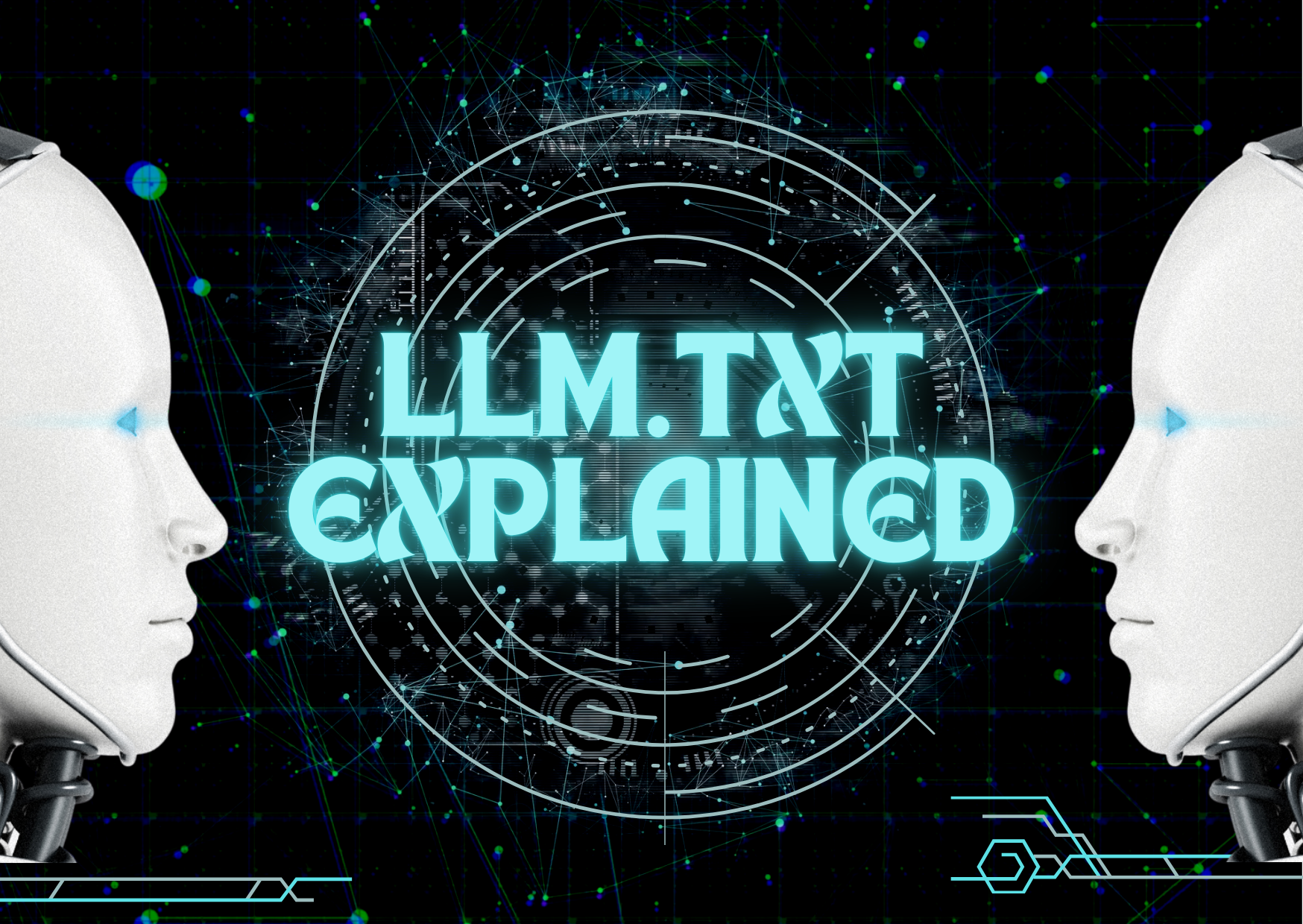llm.txt Explained: A Comprehensive Guide

With the rapid advancement of artificial intelligence—particularly Large Language Models (LLMs) such as ChatGPT, Claude, and Google Gemini—the way machines access and interpret web content is evolving.
Traditional websites, primarily built for human readers, often pose challenges for AI systems due to their complex HTML, JavaScript, and non-essential design elements.
To address this, a new standard called llms.txt has emerged. This guide explains what llms.txt is, its purpose, structure, how it differs from existing standards like robots.txt, and why it's becoming essential for AI-driven web interactions.
What Is llms.txt?
llms.txt is a markdown-based file placed at the root of a website (i.e., /llms.txt). It provides a structured and simplified summary of the website’s key content for LLMs. Unlike traditional web pages that require complex parsing, llms.txt is both human-readable and optimized for AI consumption.
Proposed by Jeremy Howard in 2024, the standard is designed to improve how AI systems access and understand web content during inference, enhancing the quality and relevance of their responses.
Why Was llms.txt Created?
Web content today is cluttered with UI elements, ads, and scripts that are difficult for LLMs to parse effectively. This often results in incomplete or incorrect interpretations by AI models.
llms.txt solves this by:
- Offering a curated, simplified view of essential website content
- Providing structured summaries and markdown links
- Reducing the need for HTML scraping or JavaScript rendering
- Improving data access speed and accuracy for AI systems
By enabling more efficient and precise comprehension, llms.txt significantly enhances AI responses related to your website’s information.
Structure and format of llms.txt
The llms.txt file uses a consistent markdown structure:
#H1 title: Name of the project or website>Blockquote summary: Brief description of the website- Optional paragraphs or bullet points for added context
##H2 sections: Organize resources (e.g., "Core Documentation", "Optional")- Markdown links: Each with optional descriptions for clarity
Example:
# Project Name
> A brief summary of the project and its key features.
Additional notes and context.
## Core Documentation
- [Quick Start Guide](https://example.com/quickstart): Introduction for new users
- [API Reference](https://example.com/api): Complete API documentation
## Optional
- [Tutorials](https://example.com/tutorials): Learn through practical examples
The Optional section is useful when content prioritization is necessary—LLMs can skip it when short on context window space.
Variants: llms.txt vs llms-full.txt
Two variants exist:
- llms.txt: A concise file with categorized links and summaries—acts as an index.
- llms-full.txt: A comprehensive markdown file containing the full content of key documentation pages in one place.
While llms.txt helps LLMs find relevant links quickly, llms-full.txt eliminates the need to follow links but can be too large for some LLMs’ context windows.
How llms.txt Benefits AI Systems
- Simplifies content access: Enables LLMs to bypass complex HTML and scripts
- Boosts contextual accuracy: Helps LLMs generate better-informed responses
- Supports AI agents: Assists autonomous AI systems in prioritizing web pages
- Accelerates dev workflows: Great for developer tools, APIs, and libraries using AI copilots
llms.txt vs robots.txt
Though both reside at a website’s root and serve machine-readable purposes, they are fundamentally different:
| Feature | llms.txt | robots.txt |
|---|---|---|
| Purpose | Guide AI to structured content | Control web crawler access |
| Audience | Large Language Models, AI agents | Search engine bots |
| Format | Markdown with sections and links | Plain text with rules (Allow/Disallow) |
| Focus | Improve AI understanding and interaction | Manage SEO and indexing behavior |
llms.txt complements robots.txt, offering content insights rather than crawl rules.
How to Create and Add an llms.txt File
Steps:
- Write the file in markdown, using H1 titles, blockquotes, and categorized lists.
- Place the file in your site’s root:
https://yourdomain.com/llms.txt - (Optional) Mention in robots.txt to help AI agents discover it
- Test that the file is publicly accessible
- Set permissions to allow AI bots access
- Maintain regularly, updating as your site evolves
Some sites also support .md versions of pages to provide AI systems with clean, markdown-formatted content directly.
Who’s Using llms.txt?
Several forward-thinking platforms are already adopting or testing llms.txt:
- Anthropic: Provides multilingual llms.txt examples
- Cloudflare: Publishes a detailed llms-full.txt for their dev docs
- LangChain & LangGraph: Use llms.txt to improve AI agent documentation parsing
- Apidog: Advocates llms.txt to make API docs more accessible to LLMs
Future Potential and Challenges
While promising, llms.txt is still developing and faces several challenges:
- Standardization: Formal spec and governance are needed
- Search engine support: Google and others don't officially use it—yet
- File size management: llms-full.txt may exceed LLM context limits
- Tooling: Generators and validators will be crucial for scale
Despite these, llms.txt holds strong potential as AI interactions with the web become more nuanced and frequent.
Summary
llms.txt is an emerging markdown-based standard that improves how Large Language Models understand and interact with web content. It simplifies access to structured, essential information—enabling AI to deliver more relevant and accurate responses.
While distinct from robots.txt, it complements traditional web standards and is quickly gaining traction among developer-focused platforms. As AI reshapes how we navigate and consume online content, llms.txt is a forward-looking step in creating an AI-friendly web.